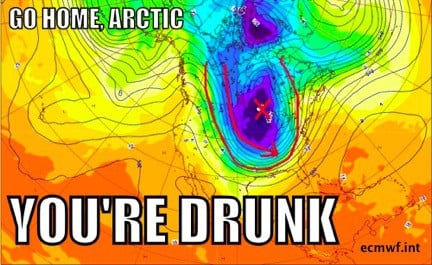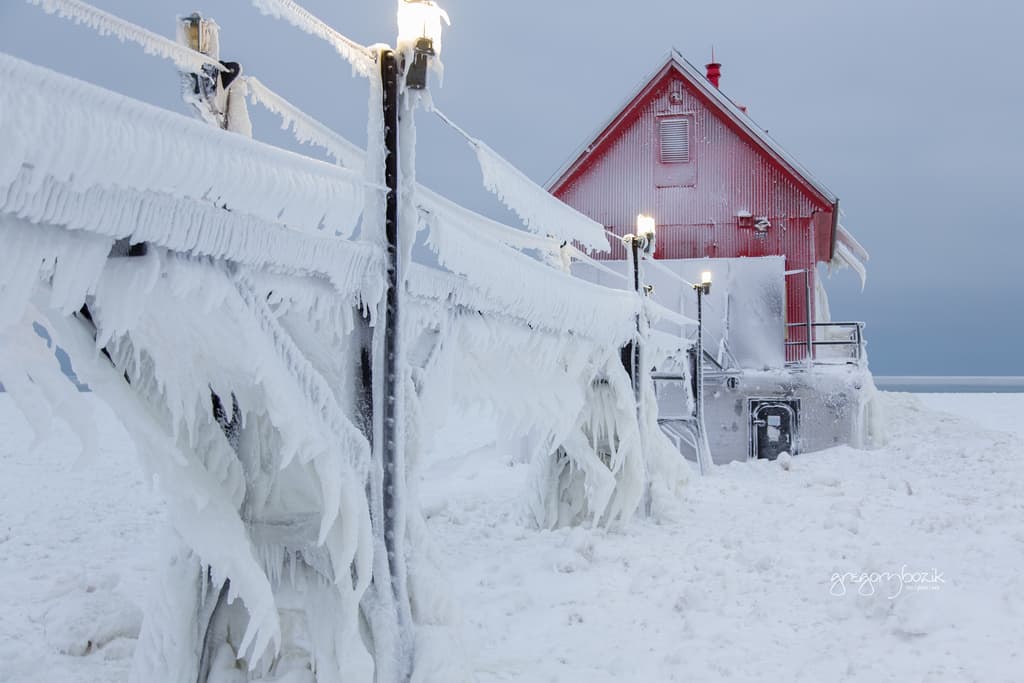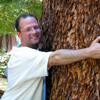
Nice work, ecmwf.int
Overheard this past Tuesday on a flight from Austin, TX to San Francisco: “Global warming, global cooling. I dunno, but this is the coldest I’ve seen in Texas. It’s really unusual.”
The temperature in Austin reached a high of 48º that day. Chicago got to all of a frigid 5º.1 Thanks to the now-famous (and awesomely named) “Polar Vortex” that hit the United States, parts of the Midwest were colder than Anchorage, AL – which reached a balmy 27º.
So what’s going on? Do these record low temperatures disprove global warming? How do we “interpret the signs of the times?”2 Are we missing out on something?
Three things to remember as we think about an answer to those questions: first, it’s important to remember that one cannot characterize the climate of an entire region based on one weather event, which is what the Polar Vortex was. Jason Samenow, the Washington Post’s weather editor, explains that “climate change is measured by evaluating continental to global trends in weather over decades – not events happening over a few days in a little region.”
The second thing is that these freezing temperatures resulted when the Polar Vortex stumbled, like a drunk in the street, down from the polar north and into the Midwest. A few days ago, during the height (depths?) of the cold wave, science blogger Greg Laden, wrote that “the Polar Vortex, a huge system of swirling air that normally contains the polar cold air, has shifted so it is not sitting right on the pole as it usually does. We are not seeing an expansion of cold, an ice age, or an anti-global warming phenomenon. We are seeing the usual cold polar air taking an excursion.” So, no, the Polar Vortex doesn’t mean that global warming is unreal.
Finally, most scientists agree that one of the results of a generally warmer Earth will be more erratic and extreme weather. The National Wildlife Federation does a good job explaining how global warming can lead to more extreme hurricanes, droughts, winters, heat waves, floods and wildfires. And in addition to his suggestions that the Polar Vortex had too much Christmas eggnog, Greg Laden also reported on a recent study that helps explain why global warming may throw off the normal wave motion of the jet streams – and thereby contribute to events like the one the Midwest has just experienced.
The threat of global climate change may represent humanity’s greatest challenge in the 21st century. We cannot afford to ignore or dismiss these unusual and extreme weather events. So, while our anonymous traveling companion was right to notice the “signs of the times,” how we a global people respond will be even more important. If you’d like to get involved in just such a response you can check out sites such as the Jesuit sponsored Environmental Science Social Change for other resources.
***
Contributing to this piece was Fr. Bayu Risanto, SJ, who studies atmospheric science and meteorology for his Masters in Science at Creighton University. Hailing from Indonesia he loves eating rainbow carrots from Omaha’s farmers market. He also edits articles for the philosophical-cultural magazine, Basis.
The cover image the Grand Haven Lighthouse during the Polar Vortex is by Flickr user gbozik photography and can be found here.
— — // — —
- Temperature data taken from www.accuweather.com ↩
- Vatican 2’s Gaudiam et Spes, paragraph 4: “To carry out such a task, the Church has always had the duty of scrutinizing the signs of the times and of interpreting them in the light of the Gospel. Thus, in language intelligible to each generation, she can respond to the perennial questions which men ask about this present life and the life to come, and about the relationship of the one to the other.” ↩


